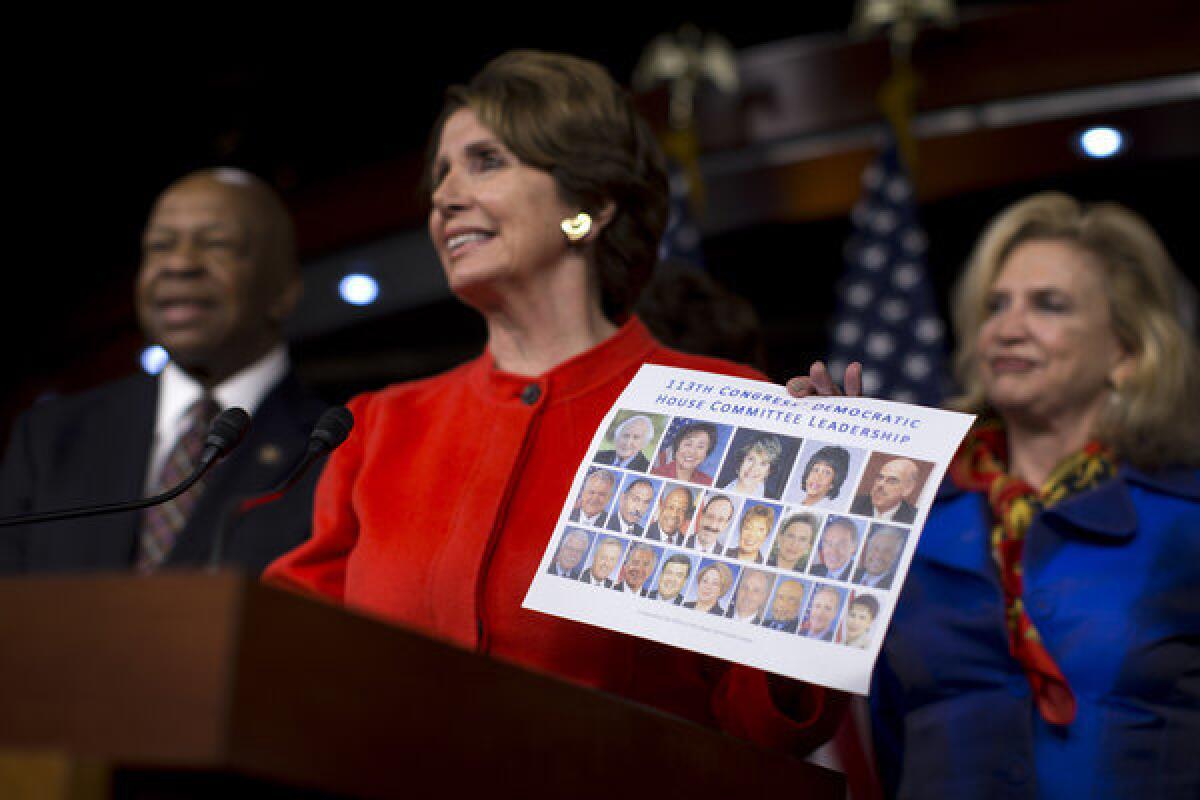House GOP leadership very white and male, but why?

- Share via
Official Washington went all atwitter last week when Republicans named white men to every one of the 19 committee chairmanships in the House of Representatives.
More than one observer accused the party of sexism, but one watchdog group in the Capitol suggested Wednesday that another primal political force, money, may explain the GOP’s retrograde management habits.
The Sunlight Foundation found that the chairs chosen by the Republican caucus (which, as majority party, gets to name committee leaders) closely correlated with those House members who raised the most money for their leadership political action committees.
Sunlight’s Lee Drutman said the GOP’s selections revealed two truths: “One is that almost all of the caucus leaders and committee chairs have large leadership PACs. Two is that almost all of the large leadership PACs are associated with male candidates.”
Money raised by the PACs is one marker of a lawmaker’s clout. The money can be used to help fellow party members win elections.
Those with top leadership positions in the House tend to have the largest political bankrolls. Majority Leader Eric Cantor’s Every Republican Is Crucial PAC ($2.1 million), Speaker John A. Boehner’s Freedom Project ($1.7 million) and Majority Whip Kevin McCarthy’s Majority Committee PAC ($1.2 million) were among leaders who led the way in fundraising.
There’s a bit of chicken-and-egg quality, to be sure, when it comes to the funding-leadership nexus. Those who raise lots of money win a chance at the top House jobs. But those already in the power positions have the most leverage to bring in the big checks. The reason is simple: Lobbyists and other interest groups prefer to give to those who already have clout.
It’s hard to imagine why House Republicans didn’t put aside the old money-for-power dynamic, though, at least this one political season. The party just took a beating in the presidential election, in large part because it could not appeal to enough women and minority voters. Less than a month later does not seem like the time to offer women and minorities mostly peripheral roles.
After the initial furor last week, the GOP caucus made one adjustment — naming Rep. Candice S. Miller (R-Mich.) chair of the Administration Committee. That at least shifted the white men-to-others balance on committees to 18 to 1.
Republican officials also wanted it noted that they had named Rep. Cathy McMorris Rodgers (R-Wash.) as the party’s conference chairwoman. The party tabbed Rep. Virginia Foxx (R-N.C.) as secretary of the GOP conference. Asked about the Sunlight Foundation critique, Cantor press representative Rory Cooper said, “It looks like they are trying hard to find a problem.”
Democrats, surprise, didn’t see it that way. After their House caucus Wednesday morning, a press aide circulated a photo of the party’s committee leaders — including women, Latinos and African Americans.
Democratic leader Nancy Pelosi of San Francisco heralded “the beautiful diversity of our caucus” at a news conference that none-too-subtly drew a distinction with the GOP leadership. “Our caucus looks like America,” Pelosi said, “so do our ranking members.”
Michael A. Memoli in the Washington bureau contributed to this report.
[For the Record, 10:38 a.m. PST Dec. 6: This post has been corrected to state that Rep. Candice Miller represents Michigan, not Minnesota.]
Follow Politics Now on Twitter and Facebook
Twitter: @latimesrainey
More to Read
Get the L.A. Times Politics newsletter
Deeply reported insights into legislation, politics and policy from Sacramento, Washington and beyond. In your inbox twice per week.
You may occasionally receive promotional content from the Los Angeles Times.











